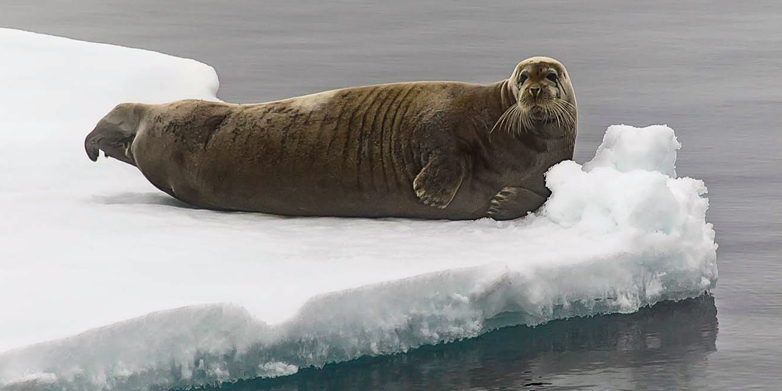The result of slow degradation
Why do environmental pollutants accumulate in the cold polar regions? This may not only be due to the fact that many substances are less volatile at low temperatures, as has been long suspected, but also to their extremely slow natural degradation.
Although persistent environmental pollutants have been and continue to be released worldwide, the Arctic and Antarctic regions are significantly more contaminated than elsewhere. The marine animals living there have some of the highest levels of persistent organic pollutant (POP) contamination of any creatures. The Inuit people of the Arctic, who rely on a diet of fish, seals and whales, have also been shown to have higher POP concentrations than people living in our latitudes.
Today, the production and use of nearly two dozen POPs and several ozone-depleting substances have been greatly restricted by two international agreements: the Stockholm Convention and the Montreal Protocol. It is not entirely clear why POPs released mainly during the second half of the 20th century, after being distributed all over the globe by air and ocean currents, have become concentrated in the polar regions. It is therefore difficult to make accurate predictions about the long-term fate of these pollutants. Researchers from ETH Zurich are currently investigating the underlying physical and chemical processes that control the dynamics of these pollutants.
Simulation of real and hypothetical substances
Thus far, discussions have focused primarily on two factors affecting pollutant accumulation, both of which are related to the cold conditions of the polar regions. At low temperatures, chemical compounds are less volatile. Experts have long suspected that these physical (thermodynamic) properties are the main reason for the higher concentrations. Based on this understanding, the concentrations found in the polar regions are the result of the long-term global distribution of POPs, governed by physics. The second factor is that chemical and microbiological degradation of substances is temperature-dependent as well: what are already poorly degradable environmental pollutants degrade even more slowly than they would in the warmer regions of the world. However, this factor was thought to be less influential.
A team of researchers led by Martin Scheringer, group leader in the Safety and Environmental Technology Group, part of the Department of Chemistry and Applied Biosciences (D-CHAB), has now compared the two effects. The scientists developed a computer model and simulated the persistence of about a dozen actual and several hundred theoretical environmental pollutants. In addition to geographical components such as ocean and air currents, the model took into account the tendency of the substances to occur in water, soil and air, and the speed at which they degrade in these environments.
Only volatile substances reach equilibrium
In their study, the scientists have shown that the theory that posits thermodynamic properties as the key factor applies only to highly volatile substances, which accumulate in the atmosphere, such as chlorofluorocarbons (CFCs), formerly used for coolants, and tetrachloromethane, formerly used in fire extinguishers. “Highly volatile substances are so mobile that they quickly achieve a geographical distribution that is controlled by their thermodynamic properties,” says Scheringer.
This is not the case for substances that accumulate mainly in water, soil and the fatty tissues of living organisms, such as the notorious insecticide DDT or the polychlorinated biphenyls (PCBs) used for electrical insulators and joint sealants. “Their pattern of distribution in the environment is determined by slower degradation in cold regions and faster degradation in warm regions,” explains Scheringer. They do not reach a thermodynamic equilibrium.
Model calculations offer advantages
“Our model calculation offers advantages over the analysis of concentrations measured in the field,” says Scheringer. Although patterns and certain mechanisms are also evident in the measurements, the analysis is affected by measurement uncertainties and substantial background noise. A model calculation, on the other hand, is idealised, making it possible to eliminate the background noise. It also has the advantage of making future projections possible.
Scheringer realises that even if the physical reasons behind the higher concentrations are known, this will not directly change much for the affected inhabitants of the polar regions. “We can no longer take these substances back out of the environment. All we can do is stop releasing them,” he said. This is precisely the goal of the Stockholm Convention.
Literature reference
Schenker S, Scheringer M, Hungerbühler K: Do Persistent Organic Pollutants reach a thermodynamic equilibrium in the global environment? Environmental Science and Technology, online publication 21 March 2014, doi: external page 10.1021/es405545w

Comments
No comments yet